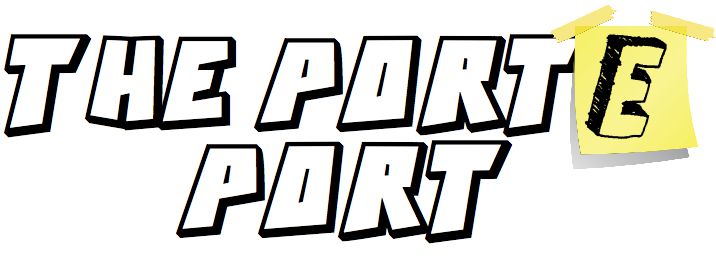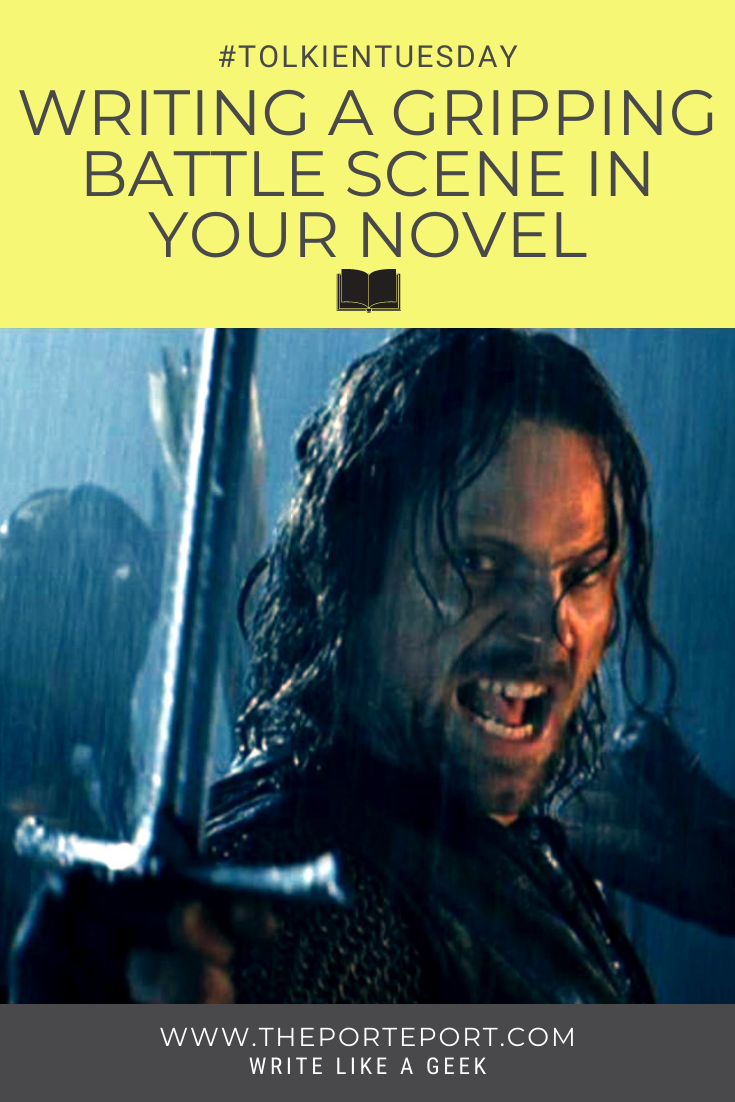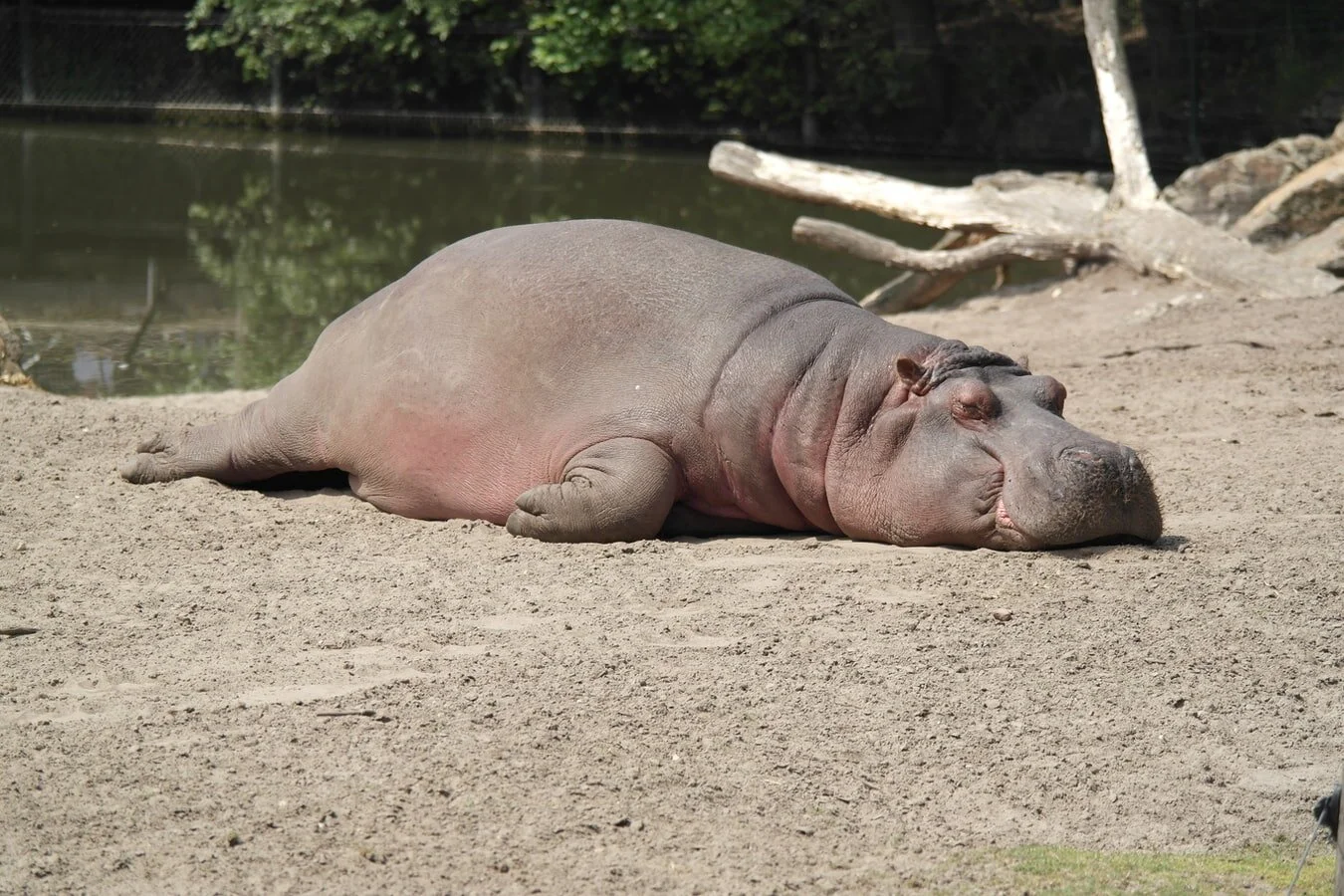Tolkien Tuesday: Helm's Deep and Writing a Gripping Battle Scene
Picture the perfect epic battle scene in your fantasy book.
Your heroes are standing on the castle walls waiting for the crazy evil army to begin their siege.
They defend goodness and hope, but your readers aren’t sure if they will last the night.
Swords start swinging, arrows start blotting out the sun, and someone shouts, “CLOSE THE GATE!”
Ever notice that? Someone is always shouting to open or close the gate in the fantasy genre. Always.
Anyway, who doesn’t love an epic battle?
There’s growing tension. Dynamic character development. An opportunity for the whole plot to shift.
If the battle is well written, that is.
If you’re like me, when you sit down to write a battle, you draw blanks.
How do I make this interesting?
Uh...he swings his sword again and down goes another goblin. And, again, he swings his sword…
Oh, no...this is getting boring.
HOW IS MY EPIC BATTLE BORING?
You have to learn how to build tension when writing a battle. Sure, battles are meant to feel chaotic, but there’s actually a lot of organizing to do if you want to keep the reader invested.
So let’s take a look at how it was done in the battle of Helm’s Deep in The Two Towers.
(A quick note: this originally was an email just for my subscribers. It’s here so you can see the kind of geeky writing advice you get if you sign up for my newsletter. Just sayin’.)
I get it. The movie has the advantage of, you know, being a movie. We see visually all these cool things happening.
My rebuttal:
A: Your words can be plenty descriptive
B: It’s how the events unfold that’s important.
When I say organization, I mean it. You have to sit down like you’re both generals in the battle to figure out a strategy.
Helm’s Deep works so well because there are mini-goals within the big goal. Yes, the Uruk-hai are trying to kill everyone. But that doesn’t give us a lot to work with from a writing perspective.
So you need to break down how the Uruks would get inside Helm’s Deep. Then organize those into different threat levels for your heroes.
Which is exactly how the battle goes in The Two Towers.
Everything is broken into sections that slowly builds tension.
It also helps to weave in another scene as the battle unfolds. Will the Ents help by taking out Saruman while his army is at Helm’s Deep? That layering of tension can play right back into the battle itself.
So let’s break every section down:
The Gear-Up Scene
The time for action is nearly here. The walls are fortified, and the heroes put on some awesome gear.
Many times there’s inspiration and despair that comes with it. It’s Legolas saying everyone is going to die, but Aragorn being a beacon of hope for the regular people that suddenly have to be warriors.
This scene contributes not only to the dire situation in front of us but also to Aragorn’s character. He is an inspiring leader, even if his wisdom was ignored by Theoden earlier.
But, we do get Theoden’s amazing monologue.
“Sir…do you really need me to go into the dressing room with you every time?”
“Where is the horse and the rider?”
The Breath Before the Plunge
There are two ways to mess this scene up: overdo it or totally forget about it.
This involves your epic heroes standing on the wall while the rain begins to fall, so to speak. Anticipation is key to building tension.
It’s like a horror movie. The most terrifying moments are right before the evil clown/doll/scissor hands jumps out.
It’s in that moment that your heart is racing, you hide behind two pillows, and pretend you’re watching, but you’re really looking slightly off-screen like that’s going to help, and you whimper a little.
Or is that just me?
That’s what the breath before the plunge scene is for. Build that anticipation, but don’t overdo it. You gotta start that battle eventually.
The Charge
Pictured: How to make your 3 seconds of screen-time count
Then comes the army charging in. In The Two Towers, the Uruks begin their attack, and chaos starts to unfold. It’s this moment that you realize just how big the evil army is.
This scene helps create the illusion of chaos. Arrows start flying, baddies start falling, the swirl of excitement and anticipation gets released.
You may even have this be a moment when things look like they might be ok. “Hey those arrows are doing some good work!”
But then something happens.
The Attackers Have a Plan
And it’s not just to run at the wall and hope for the best. They stopped by Lowe’s and picked up some ladders on the way.
And damn it, they are gonna use ’em.
Even more chaos erupts as the heroes have to figure out a way to deal with this. The tight line of defense begins to erode as Aragorn and company are being pulled in multiple directions.
And just when you think they got this (and even get lighthearted moments with Gimli), something else happens.
The Attackers Other Plan
Sure, Helm’s Deep is known for the Deeping Wall. No enemy has gotten over it. But there’s also a gate.
The Uruks came prepared for that too! Now we pan over to see they are slowly making their way to the gate to take it down.
These are those mini-goals I mentioned earlier. The battle is not just swinging swords forever, it’s get the ladders here, and the battering ram there.
Each mini-goal should be adding to the tension of your battle. Otherwise, it’s just clutter.
The heroes adjust their plans again to handle these mini-goals.
Arrows fire in that general direction to start taking out Uruks. Rocks and spears (even one from Peter Jackson himself!) start raining down on this new threat.
Look at him go!
Your reader starts thinking:
You know what? It’s a lot, but the heroes are handling it.
They got this.
They Don’t Got This
Right on cue, as Theoden says, “Is this it?” the biggest threat arrives.
In the chaos, the Uruks were up to no good.
The wall is about to be blown up, and the heroes have only moments to react.
Mr. Never Misses A Shot With His Bow misses twice. (In his defense, he hits his target in the only place he can from directly above. But it was one of them crazies, and he doesn’t care.)
This mini-goal was hidden from the audience. There was a small breadcrumb earlier in the story but in the chaos of battle, we forget about it. And just like the heroes, it’s too late when we realize what’s happening.
And the wall goes.
This is the turning point in the battle for the bad guys, and there might be more.
You want some ebb and flow. You want the good guys to gain ground, then the bad, then the good to have some hope, then the bad again.
It’s give and take as you build your tension.
Well, this is a take to be sure.
Pin this!
The Battle Has Consequences
With the wall breached and the heroes exposed, one dies.
Yes, it’s a minor character from the last movie, but he’s so cool, though! Poor Haldir. You aren’t even supposed to be here, my dude!
But a named character going shows us that we aren’t getting out of this without losses. Who’s at risk? We start cataloging in our brain who might be vulnerable to go right here and now.
That tension swirls in us, even if we think we know how this will all play out.
So work that into the battle scene in your book.
Your epic battles should have stakes. Yes...that means one of your characters is probably going to have to die or be changed forever. Externally, internally, something has to give.
You don’t want your battles to have zero bite.
The Domino Effect
With our heroes scrambling to find a place to fall back to, the other plans of the Uruks are coming to fruition.
The gate is coming down, and who’s there to stop it? Theoden himself finally gets his ass in gear and does something about it, for like, two seconds.
Then Aragorn and Gimli step up to the plate, fighting Uruks out in the open.
They are only able to react to what the Uruks are doing. There’s no more strategy for them other than desperately trying to plug the holes.
And those characters become vulnerable out there on the walkway.
Never mind. It’s the orcs that have to be worried.
This is your moment of hope. They fight like badasses, and Legolas does a cool bow thing.
Maybe they will figure out how to stop this darkness after all.
The Darkness Is Too Much
Despite their best efforts, the invading Uruks are too much to handle. The walls are taken. The gate is breached.
Now it’s time to retreat.
This scene is probably a short one. It’s simply a moment for your audience to take in how terrible this all is. How are they going to get out of this?
Maybe they won’t.
A Breather
With your heroes in a momentarily safe spot, some of them start to panic.
And so do we!
What are they going to do?
Every moment they take to figure it out, more people die, and there’s less chance to come out of this alive.
And so the desperation kicks in.
It’s time to ride out and meet the enemy. Being a hero, especially in Tolkien’s world, means facing your end with courage. You don’t want to die held up trying to hide.
This is your chance to develop characters even more and weave in the theme. There’s an underlying point to this battle other than being kick-ass. This is the moment to show it.
The Eucatastrophe
“OK Shadowfax, time is of the essence…but take a moment to look cool anyway”
When things seem darkest, that’s when victory becomes possible.
It’s the sudden dawn on a dark and stormy night. Literally, in this case.
The sun rises, and Gandalf keeps his promise to arrive precisely at the right time.
The breadcrumbs for this moment have to be earned. The battle is so epic you forget there’s another way out.
We know that there are more riders of Rohan out there, but they are so far out of the way, are they going to be any help? Gandalf was supposed to show up, but will there be time?
Enter the Eucatastrophe.
Fighting against the darkness was not in vain. Theoden, Aragorn, and the remaining soldiers ride out, not to their doom, but to push the Uruks up against a pissed off Eomer and crew.
And the audience gets the sweet release of all that built-up tension.
And maybe even take their first breath since the start of all this.
The snobs can say they knew what was going to happen all they want. But they can’t deny their stomach was in a little knot, and their palms were at least a tiny bit sweaty.
Don’t look at the battles you write as a whole. Break them down. Compartmentalize them so that you can build tension.
The anticipation, chaos, hope, despair, fear, and relief, all need to weave together into a coherent progression.
Exhaust your reader in the best of ways when it’s all done. And make sure they don’t put your book down until the battle is over.
And you may just have a fan for life if you do this battle right.
I saw Fellowship of the Ring with my dad in theater when it came out because of his love of The Lord of the Rings.
It was fun, sure.
But it was Helm’s Deep that turned me. It was a personal Eucatastrophe.
And here I am writing yet another Tolkien Tuesday because I’ve now read the series multiple times and pretended too many times to be in Middle Earth.
Because the tension of this one scene got me.
I was gripped by the throat and thrown down the path of falling completely in love with this story.
And what if you get a reader like that too?
Build your epic battle piece by piece.
And keep writing. Keep editing. Just like our heroic defenders of Helm’s Deep...don’t give up.
Dawn is near.
Like I said earlier, this article was an email I sent to my subscribers. There’s more geeky writing advice like it that only my email list gets to see. Sign up for my newsletter, and start writing like a geek:













